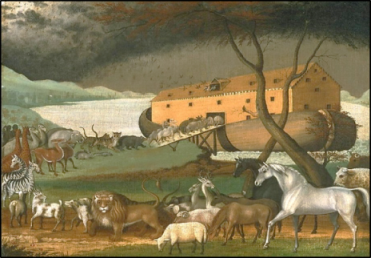
Our Geological Wonderland: Examining the Biblical Great Flood
“And, behold, I even I, do bring a flood of waters upon the earth, to destroy all flesh, wherein is the breath of life, from under heaven; and everything that is in the earth shall die … every living substance that I have made will I destroy from off the face of the earth.” —Genesis 6:17; 7:4
The Biblical Great Flood
One of the most frightening, well known, and often repeated stories in the Christian Bible and also described in other religious texts such as the Quran and the Epic of Gilgamesh is a description of a worldwide flood. Floodwaters are said to have covered the entire Earth and then gradually receded. Some, but not all, living creatures were “saved” on an ark, which was constructed by Noah and his family according to God’s direction.
Careful reading of Genesis reveals a number of inconsistencies in some flood details, such as variations in the duration of the actual flood, variations in the number and types of animals taken on the ark, which bird was supposedly released by Noah to mark the end of the flood, and so on.
Various organizations such as the Creation Research Society in Arizona, the Institute for Creation Research in Dallas, and others have attempted to provide evidence from various sources to prove that the flood occurred and that the Earth has a very young age. Answers in Genesis come in the form of a Creation Museum in Cincinnati and an Ark Encounter that has even “created” a replica of Noah’s Ark in Tennessee, which can be visited for a fee ranging from $15 to $149.
The search for the actual ark has been undertaken by numerous individuals and groups in a region near the Turkish border with Iran, on or near Mt. Ararat (Figure 1), where the ark was supposed to have come to rest after the flood. Alas, despite all these searches, no physical evidence or even photographs have been put forth.
Mt. Ararat consists of two volcanic peaks with a surrounding lava field. Both peaks are geologically known as stratovolcanoes, which means that they consist of layers of lava and volcanic ash resulting from periodic eruptions that began in medial Miocene time, about 15 million years ago. These volcanoes have most recently erupted in 2500–2400 BCE, 550 BCE, possibly in 1450 CE and 1783 CE, and definitely in 1840 CE.
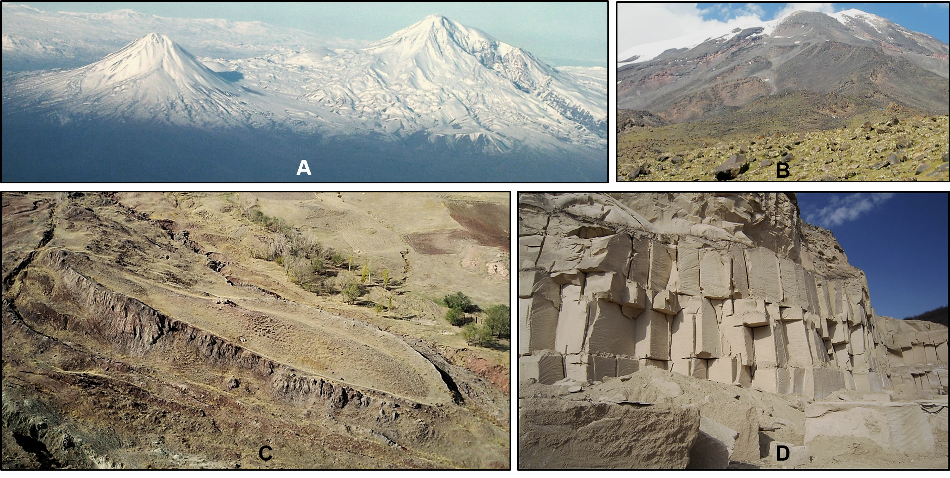
The date of creation of Earth based on calculations of Archbishop James Ussher in the mid 1600s occurred about 6,000 years ago — approximately 4004 BCE. Most young-earth creationist literature suggests the flood occurred about 1,600 years after creation, which would be approximately 2500–2400 BCE. Unfortunate timing! If the ark did come to rest on or near Mt. Ararat at that time, it would have likely been engulfed in a lava flow or covered with volcanic ash, and all aboard likely would have perished.
The Biblical Great Flood considered from a different perspective
If we consider factual information from modern biology, hydrology, geology, and paleontology it becomes impossible to accept a worldwide Great Flood as an actual historical event. In order to accept the biblical account a very large body of evidence must be ignored or twisted to fit a belief (young-earth creationists, flood “geologists,” etc.). Consider the following.
Consider the biological record
As written in Genesis 6:14, Noah’s Ark was 300 cubits long (450 feet) and 50 cubits wide (75 feet). The three-level ark was 30 cubits tall (45 feet). So it was presumably a vessel with dimensions of 450 x 75 x 45 feet, therefore with a volume of 1,518,750 cubic feet. For comparison, the White House in Washington D.C. has dimensions of 168 feet long, 152 feet wide, and approximately 65 feet tall (168 x 152 x 54) with a volume of 1,670,760 cubic feet (Figure 2).

If Noah and his family were all on the ark, that was a total of eight humans. Noah was commanded by God to bring two of each “kind” of creature on board the ark. Of note is that there was no mention of plants or aquatic organisms such as fish or any arthropods such as insects, spiders, and such, which make up a majority of living species.
There are at least three major problems with this situation.
First is the fact that plants would not have survived such a flood. You can determine this for yourself by severely overwatering your house or garden plants. They will most likely die.
Second is that most aquatic organisms are adapted to either fresh water or saline water conditions. Therefore, either all freshwater organisms or all saltwater organisms would have perished in the flood, and because of the dilution factor, all most likely would have perished.
Third, Biblical accounts mention nothing about spiders, insects, and such either being brought onto the ark or left to perish in the flood. It is important to emphasize that these groups comprise a very significant portion of living organisms.
Furthermore, use of the term “kind” in the Bible has no meaning in biological classifications of living or fossilized organisms (Figure 3). However, in most creationist literature, authors arbitrarily consider “kind” to be equivalent to the family level in modern classification systems. There is no proof for this arbitrary decision except to try and explain how Noah managed to get all these ”kinds” on his ark. This is a creationist attempt to deal with size constraints on the ark and an assumption that there are not that many “kinds” so they could presumably all fit.
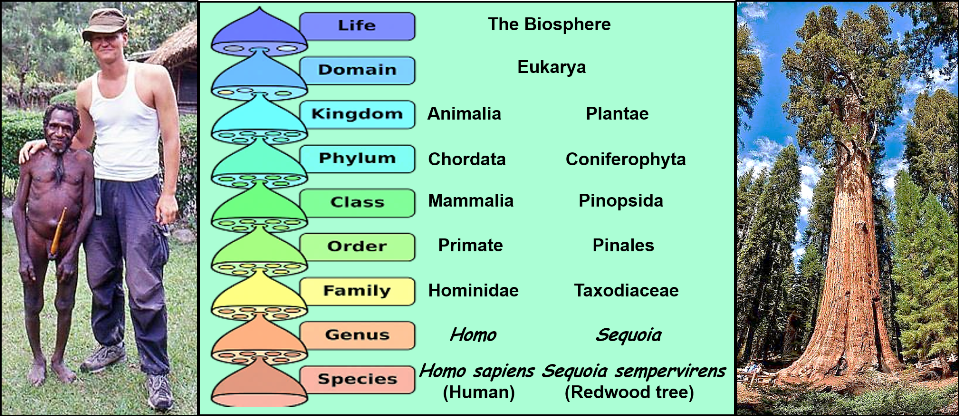
As it turns out, there are actually over 9,500 families of living organisms known today, which would imply that 19,000 different individuals had to be on the ark (one male and one female of each “kind”). Even excluding all those abandoned plants, aquatic animals, and arthropods, that is clearly a very large number to fit on the ark.
Another major biologic problem arises with usage of “kinds” as representing biologic families. Namely, there is no possibility of inbreeding among different groups within any family (or “kind”). For example, the current family Hominidae includes various great apes, chimpanzees, bonobos, and humans for a total of eight different species. Obviously, these species do not (and cannot) interbreed and produce offspring. Therefore, the use of “kind” for the family level is meaningless if you are considering repopulating the Earth from creatures on the ark after the flood.
In order to repopulate after the flood, the Biblical term “kind” would therefore have to refer to the species level of classification. Distinct species are defined on their ability to breed and produce fertile offspring and their inability to do so with other species. So Noah’s Ark would have to have included most species (minus those left out as mentioned above). The problem is that today, we recognize over 1.7 million different species, and that is considered to be only a fraction of the actual number of existing species on Earth. There’s no possible way that they could have fit on the ark or even in the White House!
Yet another consideration is that of feeding and cleaning up for all those “kinds” on the Ark. Where did the food supply come from? How did only eight humans manage to feed everyone? Who managed to keep the ark clean from the vast amount of feces generated?
The biological record provides no evidence for a Biblical Great Flood.
Consider the hydrological record
Some physical parameters of a global flood described in Genesis 6:9 considered on the basis of current knowledge of how the Earth works indicate significant problems. As described in Genesis, the rains came and lasted for 40 days and 40 nights (or longer or shorter as this detail varies) and completely flooded Earth (Figure 4).
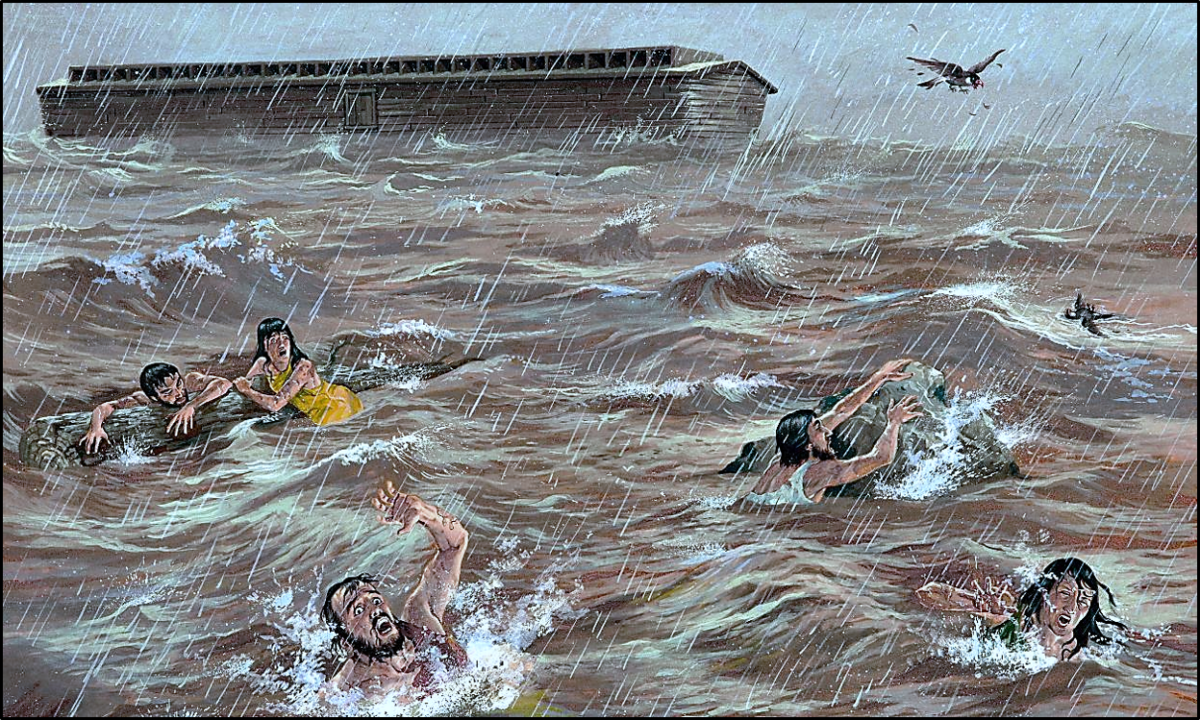
Current understanding of the movement of water on and within the Earth, known as the Hydrologic Cycle, indicates that rainfall is a result of evaporation, the formation of clouds, and then precipitation at some location. Therefore. it would not have been possible for rain to occur everywhere simultaneously as there would be no source area for evaporation.
Additionally, if all land was completely covered, as described, the water would have to be over 29,000 feet deep in order to completely cover Mt. Everest, which has an elevation of slightly over 29,000 feet.
Two questions arise from this number. Where did this vast amount of water come from? Where did this vast amount of water disappear to?
Thus, there are at least three physical constraints linked to the floodwaters that cannot be reconciled with natural physical conditions on Earth.
The hydrologic record provides no evidence for a Biblical Great Flood.
Consider the geological record
Over the past 200 years, geologists have studied and organized the rock record preserved on and below the surface of the Earth. One result of these studies is the geologic time scale, which organizes the global rock record on the basis of when they formed. Another result is the recognition of the environmental conditions in which these rocks were initially deposited or otherwise formed.
For example, if floodwaters had actually covered Mt. Everest, we should expect to see evidence in the rock record of that mountain. In fact, there is no evidence of a flood event in the rock record at that location (Figure 5).
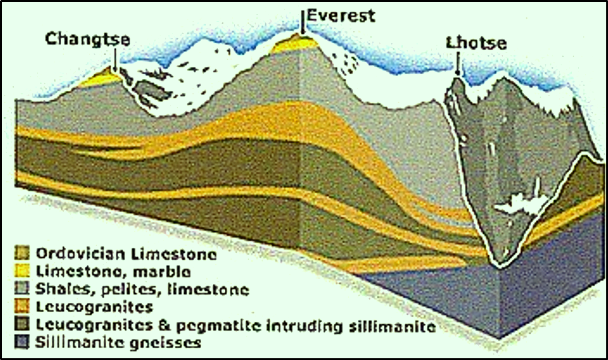
What about elsewhere? Logically, we would expect to see evidence of a worldwide flood event in the rock record on a global scale.
In fact, there are preserved sedimentary rocks which do attest to having been deposited underwater. However, almost all of these rocks and their contained fossils record episodes of quiet, normal depositional conditions rather than high energy flood conditions. A portion of the rock record provides an example (Figures 6 and 7).
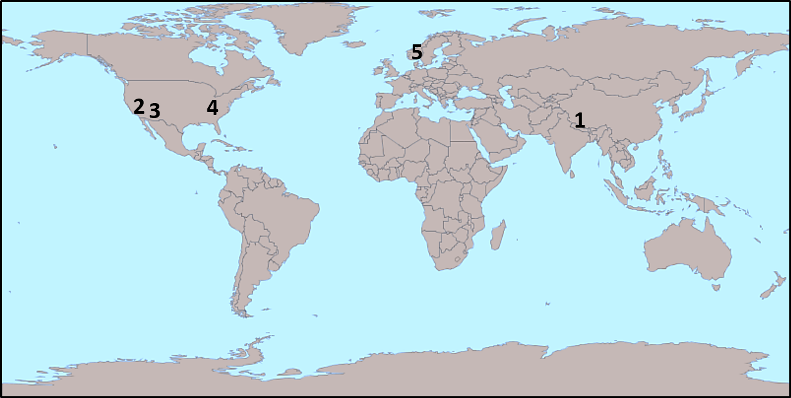

Additionally, there is no internationally recognized interval of any geologic time for which there exists a worldwide record of rocks deposited in water. Each time interval has some to many geographic locations that were above sea level.
The rock record provides no support for a Biblical Great Flood.
Consider the Paleontologic (fossil) Record
Based on fossil evidence collected for the past 300 years, we can make the following comments (Figure 8). For the first 85–90 percent of geologic time (roughly 4 billion years), the diversity of life on Earth was low. There were no complex organisms available for Noah to take on an ark in order to repopulate the Earth after the flood. Only single-celled organisms such as bacteria and algae are known from this rock record. Therefore, the flood could not have occurred during that vast time interval.
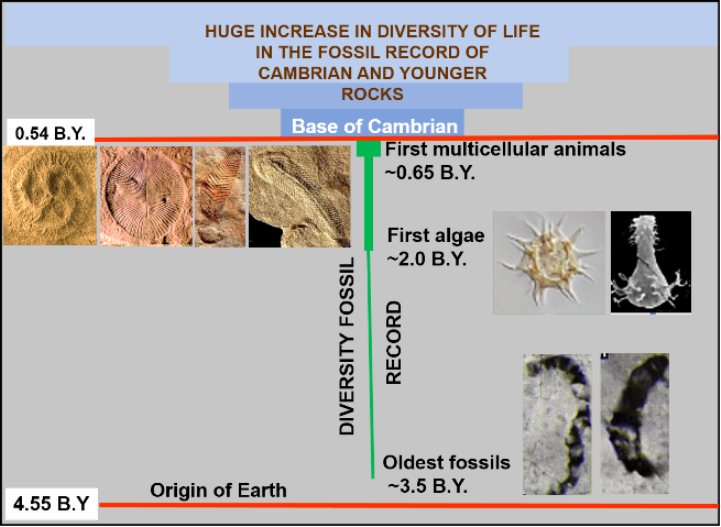
Only during the most recent 10 percent of Earth’s history (the last 650 million years) did more complex organisms appear and the diversity of life greatly increase. For this interval of time, there is no rock record of global flood deposits and no extinction event that would match descriptions in religious texts.
The paleontological record provides no support for a Biblical Great Flood.
Interpretation
Legitimate rigorous study within any scientific discipline that involves the Earth will provide no valid evidence to support any religious account of a worldwide Biblical Great Flood during any past geologic time interval. So what might be an explanation for the flood story? Very likely, the flood account is a depiction of a medium- to large-scale regional event such as what occurred in the midwestern United States during the winter and spring of 2018–19.
Because various parts of the Bible were written by different people and complied at different times, there does not seem to be any precise way to determine when such a regional flood occurred. Of note here is that at the time of writing, humans had no real concept of the size of the Earth, nor was anyone able to observe the entire planet. There would have been no way to document a global flood. Therefore, what is written may very well be a projection of a local or regional event and as such is essentially historical fiction.
Articles related to “Our Geological Wonderland: Examining the Biblical Great Flood”
Our Geological Wonderland: The missing rock record in St. George



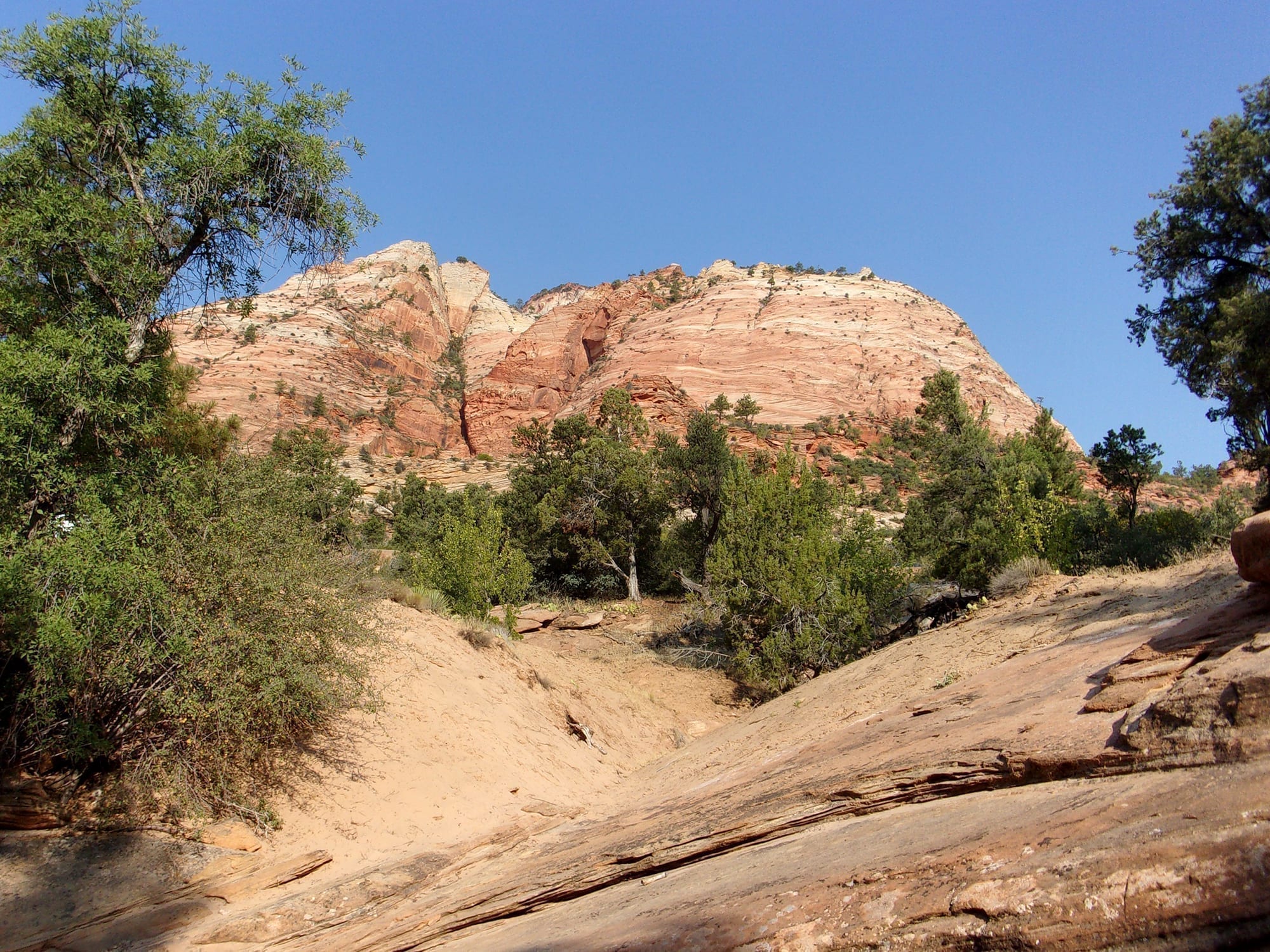

Very good article Rick. I enjoyed the read and plan on giving a copy to a person who unbelievably thinks the earth is 10,000 yrs old.
from a former student at SDSU.